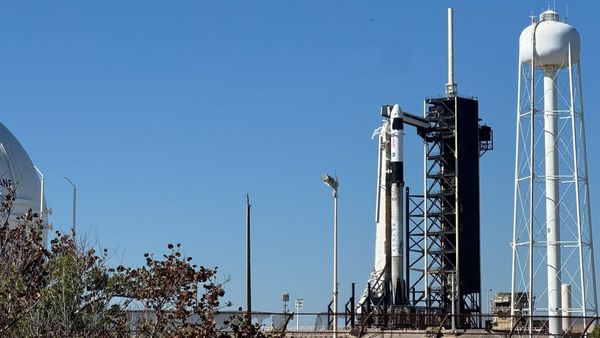One of the best and most reliable annual meteor showers has arrived just in time for end of the year celebrations — and there’s not long to go until it reaches its peak.
The Geminids meteor shower has been back since mid-November, and when it peaks in early December, it will offer “views of one of the year’s most prolific meteor showers against the darkness of the winter’s sky”, according to an expert.
Dr Minjae Kim, research fellow in the physics department at the University of Warwick, said: “An interesting feature of the Geminids is that their radiant point, where the meteors seem to originate from, rises in the mid-evening.
“This means you can start watching this shower earlier in the night than most other meteor showers.
“These meteors are known for their brightness, speed and typically yellow hue.”
Here's how to catch it at its best.
What are Geminids?
The Geminids are bright, fast, and multicoloured and their radiant — the point in the sky from where they appear to come — is the constellation 'Gemini' - or 'twins'. The constellation is not the source of the meteors, but rather certain names help people to determine the showers viewed.
Nasa has said that although Geminids presently take the title of one of the top meteor showers, they were not always considered noteworthy, especially when they first started appearing in 1862, with viewing capacity limited to only 10 or 20 meteors per hour.
Since then, the Geminids has climbed its way to the top of the list of the most exciting and incredible meteor showers offering great viewing experiences. It is thought to be intensifying year on year. Currently, the shower produces 120 to 150 meteors at peak, however, the number visible can be much less because of factors including light pollution.
Geminids meteors appear to radiate from close to the star Castor in the constellation Gemini.
However, the actual source of the shooting stars is a stream of debris left behind by rocky asteroid 3200 Phaethon, making this shower one of the only major ones not to originate from a comet.
Where do meteors come from?
Meteors are up to 4.6 billion years old and come from leftover comet particles and bits from asteroids – others can come from Mars or the moon. When these objects come around the Sun, they leave a dusty trail.
Each year, Earth passes through these debris trails, as bits collide with the atmosphere where they disintegrate to create mesmerising streaks in the sky.
The Perseid meteor shower is another highlight of the stargazing calendar.
How to watch Geminids this year
Fortunately, no astronomy tools are required to view the shower.
Most people will be able to catch a glimpse from predawn into the later hours of the night. Since the shower is slated to begin from approximately 9pm or 10pm, it is one of the best annual sighting opportunities for young stargazers.
The showers will be visible across the globe due to a nearly 24-hour broad maximum.
To view the Geminids, people are advised to wrap up warm and find a spot a good distance from city lights or streetlights such as parks, rural areas and locations a good distance from urban centres. When lying down and looking up, stargazers should have their feet facing south, taking in as much of the sky as possible. And it's as simple as that!
However, general guidance for a sighting includes remaining patient. Within 30 minutes of being in the dark, people's eyes should adapt to meteors. It is advisable to minimise the use of phones, and look up towards the dark sky and not directly at the radiant, as doing the latter can limit the number of meteors visible. Meteors are mainly white or yellow, but can also be green, red, and blue.
Dr Kim added: “In the UK, I would recommend you head out around 6-7pm, giving your eyes enough time to adjust to the night sky, enhancing the visibility of the meteors.
“The best viewing spot would be somewhere far away from urban lights – so rural areas will get the best viewing experience.”
When does it peak?
The Geminids meteor shower returned on November 19 this year. However, stargazers can be rest assured it hasn't yet peaked and will do so during the evening of Thursday, December 14 when the shower will offer the most meteors per hour.
The Geminids can be best observed from midnight and into early pre-dawn hours once the radiant point is higher in the sky.
Viewing experiences will be available to people through to December 24.







